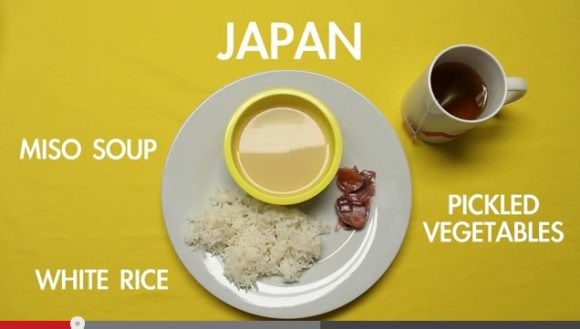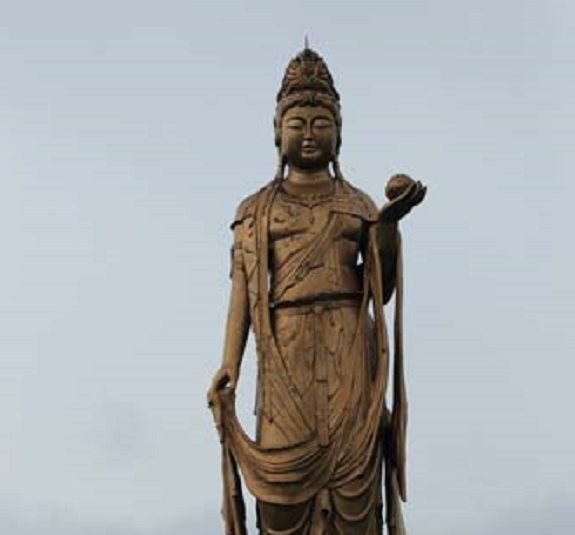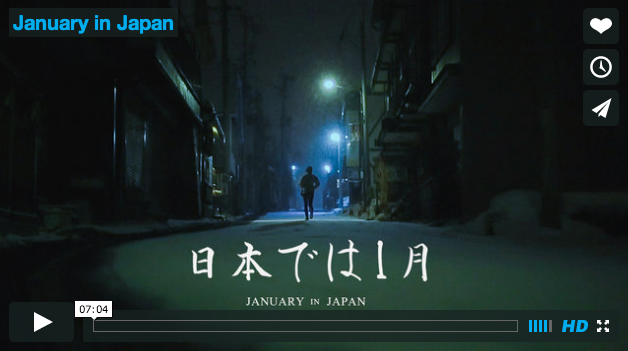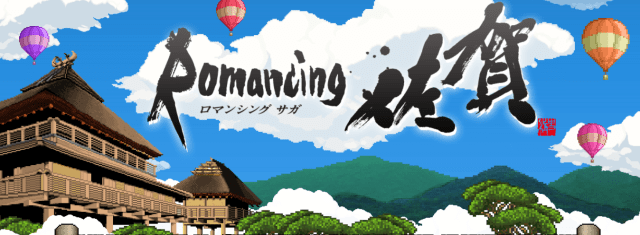Karate has always been one of those martial arts forms that never really had much appeal to me. The idea of repeating the same kata routines – with names like “Black Dragon Karate Chops 20 Weasels at Midnight” or whatever – to commit the moves to muscle memory always seemed kind of boring and counter-intuitive to me.
And now, upon learning that at least one school has students train half naked, in freezing water, in the dead of winter, I’m even less inclined to try the sport. I’d rather go four rounds in the Octagon with Brock Lesnar.












 Mt Fuji convenience store becomes “lawless zone” as tourists hurl abuse at security guards
Mt Fuji convenience store becomes “lawless zone” as tourists hurl abuse at security guards Eight unforgettable hot springs, as recommended by Japan’s “Professor Bath”
Eight unforgettable hot springs, as recommended by Japan’s “Professor Bath” Japan’s workplace drinking party communication is unnecessary, says majority of workers in survey
Japan’s workplace drinking party communication is unnecessary, says majority of workers in survey Drinkable Mayo on sale at Japanese convenience stores for mayonnaise fanatics
Drinkable Mayo on sale at Japanese convenience stores for mayonnaise fanatics Travel tip: Fukuoka has a great luggage delivery service that’s cheaper than a coin locker
Travel tip: Fukuoka has a great luggage delivery service that’s cheaper than a coin locker Late-night cake cafe in Tokyo’s hostess/host bar district will satisfy your confectionary desires
Late-night cake cafe in Tokyo’s hostess/host bar district will satisfy your confectionary desires Man with snake face tattoo arrested for assault, neighbors shocked he would do such a thing【Vid】
Man with snake face tattoo arrested for assault, neighbors shocked he would do such a thing【Vid】 Starbucks Japan reveals new holiday goods for the 2024 festive season
Starbucks Japan reveals new holiday goods for the 2024 festive season That time when we made a theme song for Kura Sushi out of our sheer love for it【Video】
That time when we made a theme song for Kura Sushi out of our sheer love for it【Video】 The new Ranma 1/2 anime is here! So is it worth watching?【SoraReview】
The new Ranma 1/2 anime is here! So is it worth watching?【SoraReview】 Studio Ghibli releases new range of cardigans for anime fans
Studio Ghibli releases new range of cardigans for anime fans Berserk T-shirts coming to Uniqlo for launch of new Manga Curation line【Photos】
Berserk T-shirts coming to Uniqlo for launch of new Manga Curation line【Photos】 Kyoto Whopper divides customers at Burger King Japan
Kyoto Whopper divides customers at Burger King Japan Japanese burger chain no longer serves onion rings, but offers intriguing replacement【Taste test】
Japanese burger chain no longer serves onion rings, but offers intriguing replacement【Taste test】 Celebrating Good Couple’s Day in Japan…by getting our significant others to dress us
Celebrating Good Couple’s Day in Japan…by getting our significant others to dress us 7-Eleven Japan releases fukubukuro lucky bags filled with convenience store surprises
7-Eleven Japan releases fukubukuro lucky bags filled with convenience store surprises Taking the Kyoto overnight bus for the first time
Taking the Kyoto overnight bus for the first time Beautiful Totoro bag returns, still requires jumping through an extra hoop to get, still worth it
Beautiful Totoro bag returns, still requires jumping through an extra hoop to get, still worth it Yakuza vending machines coming to real-world Tokyo neighborhood that inspired Like a Dragon games
Yakuza vending machines coming to real-world Tokyo neighborhood that inspired Like a Dragon games Nintendo’s controller capsule toys are so cool, even the machine you buy them from is awesome【Pics】
Nintendo’s controller capsule toys are so cool, even the machine you buy them from is awesome【Pics】 One of Japan’s most beautiful hot spring towns announces new limits on number of day trippers
One of Japan’s most beautiful hot spring towns announces new limits on number of day trippers Ghibli’s Princess Mononoke teams up with Foxfire for outdoor apparel collaboration【Photos】
Ghibli’s Princess Mononoke teams up with Foxfire for outdoor apparel collaboration【Photos】 Ghibli Park debuts first winter illumination display with Howl’s Moving Castle theme
Ghibli Park debuts first winter illumination display with Howl’s Moving Castle theme Tokyo Disneyland loses top-attendance crown for Japanese theme parks for second year in a row
Tokyo Disneyland loses top-attendance crown for Japanese theme parks for second year in a row Sanrio and magical girl anime PreCure join forces for new merch line【Photos】
Sanrio and magical girl anime PreCure join forces for new merch line【Photos】 Pringles releases a limited-edition sweet flavour in Japan
Pringles releases a limited-edition sweet flavour in Japan Japanese job-quitting service contacted by other job-quitting service because employee wants to quit
Japanese job-quitting service contacted by other job-quitting service because employee wants to quit After cancelling Halloween, Tokyo’s Shibuya neighborhood cancels New Year’s Eve too
After cancelling Halloween, Tokyo’s Shibuya neighborhood cancels New Year’s Eve too McDonald’s new Happy Meals offer up cute and practical Sanrio lifestyle goods
McDonald’s new Happy Meals offer up cute and practical Sanrio lifestyle goods Foreign tourists on Shinkansen bullet train break suitcase etiquette, angering local passengers
Foreign tourists on Shinkansen bullet train break suitcase etiquette, angering local passengers [Deleted] Article written for April Fool’s Day 2018
[Deleted] Article written for April Fool’s Day 2018 Japanese government to make first change to romanization spelling rules since the 1950s
Japanese government to make first change to romanization spelling rules since the 1950s Foreigner’s request for help in Tokyo makes us sad for the state of society
Foreigner’s request for help in Tokyo makes us sad for the state of society Ghibli founders Toshio Suzuki and Hayao Miyazaki contribute to Japanese whisky Totoro label design
Ghibli founders Toshio Suzuki and Hayao Miyazaki contribute to Japanese whisky Totoro label design Japanese convenience store Family Mart announces abolishment of eat-in spaces
Japanese convenience store Family Mart announces abolishment of eat-in spaces Princesses, fruits, and blacksmiths: Study reveals the 30 most unusual family names in Japan
Princesses, fruits, and blacksmiths: Study reveals the 30 most unusual family names in Japan Life-size vibrating Legend of Zelda Master Sword for sale from Nintendo【Photos】
Life-size vibrating Legend of Zelda Master Sword for sale from Nintendo【Photos】 Studio Ghibli releases free-download board game — Here’s how to play it without reading Japanese
Studio Ghibli releases free-download board game — Here’s how to play it without reading Japanese Late-night cake cafe in Tokyo’s hostess/host bar district will satisfy your confectionary desires
Late-night cake cafe in Tokyo’s hostess/host bar district will satisfy your confectionary desires Man with snake face tattoo arrested for assault, neighbors shocked he would do such a thing【Vid】
Man with snake face tattoo arrested for assault, neighbors shocked he would do such a thing【Vid】 Starbucks Japan reveals new holiday goods for the 2024 festive season
Starbucks Japan reveals new holiday goods for the 2024 festive season That time when we made a theme song for Kura Sushi out of our sheer love for it【Video】
That time when we made a theme song for Kura Sushi out of our sheer love for it【Video】 The new Ranma 1/2 anime is here! So is it worth watching?【SoraReview】
The new Ranma 1/2 anime is here! So is it worth watching?【SoraReview】 Beautiful anime bus will take travelers to Your Name’s countryside setting starting this month
Beautiful anime bus will take travelers to Your Name’s countryside setting starting this month My Neighbour Totoro kimono coat sells out as soon as it’s released by Studio Ghibli in Japan
My Neighbour Totoro kimono coat sells out as soon as it’s released by Studio Ghibli in Japan Godiva takes swipe at Japan’s obligation chocolate king, Tokyo chocolatier fights fire with smile
Godiva takes swipe at Japan’s obligation chocolate king, Tokyo chocolatier fights fire with smile Fried sandwiches arrive in Tokyo, become hot topic on social media
Fried sandwiches arrive in Tokyo, become hot topic on social media Doraemon found buried at sea as scene from 1993 anime becomes real life【Photos】
Doraemon found buried at sea as scene from 1993 anime becomes real life【Photos】 The 5 best Japanese bento to buy at Kyoto Station
The 5 best Japanese bento to buy at Kyoto Station How often do Japanese people search for their ex online?【Survey】
How often do Japanese people search for their ex online?【Survey】 Young Japanese men say paying for dates is the hardest part of life as a guy【Survey】
Young Japanese men say paying for dates is the hardest part of life as a guy【Survey】